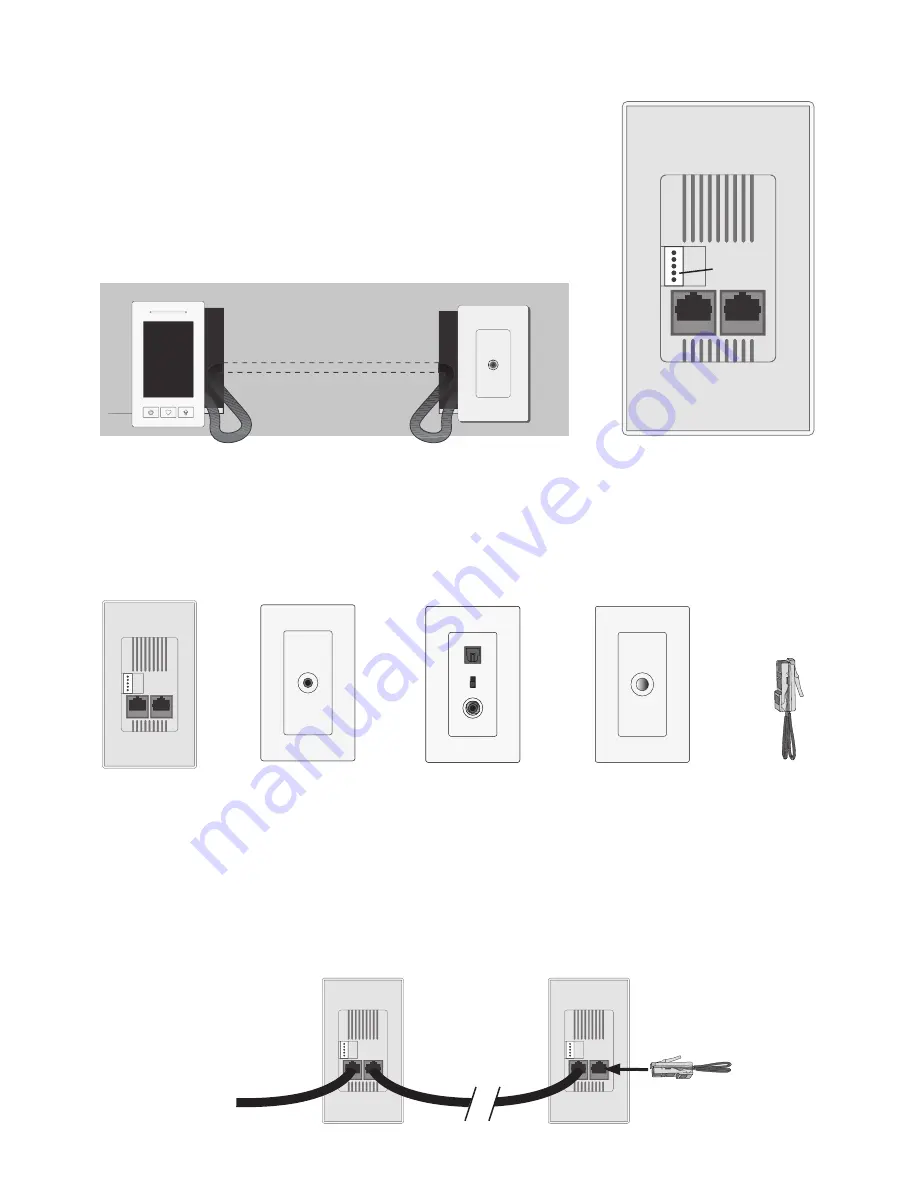
22
Installing the LyncTouch
Connecting a Standard Input Panel
A Standard Input Panel (SIP) offers an easy and economical
connection point for attaching an audio source component within
the same room as the LyncTouch. That source can then be made
available to every zone. The SIP connects to the back of a LyncTouch
using 5 of the 8 conductors found in a Cat cable and a special 5-pin
adapter included with the SIP. That adapter plugs into the white
connector shown in the image at right. A SIP can be installed directly
next to the LyncTouch or up to 80 feet away.
Connecting an Analog Input Panel (AIP), Digital Input Panel (DIP) or Bluetooth Input Panel (BIP)
These three active devices can be connected directly to the central Lync controller or to the back of a
LyncTouch using the available RJ-45 port. When this is done, be sure to insert an RJ-45 termination plug
included with every LyncTouch, AIP, DIP, and BIP into any open port to ensure proper operation.
Connecting a second LyncTouch within the same zone
In larger rooms, it is often convenient to install more than one LyncTouch. Similar to adding an AIP, DIP, or
BIP (see above), a second LyncTouch can be connected to the open port on the first LyncTouch or back at
the central Lync controller with a special “Y” adapter (call for more info). When this is done, be sure to insert
an RJ-45 termination plug included with every LyncTouch, AIP, DIP, and BIP into any open port to ensure
proper operation. Also to ensure proper operation, the “address” of the first and second LyncTouch need to
be unique. See “Address” on page 24 for more information.
LyncTouch (Back)
Analog Input Panel (AIP)
Digital Input Panel (DIP)
Bluetooth Input Panel (BIP)
RJ-45 Terminator
To central
Lync Controller
RJ-45 Terminator
LyncTouch (Back)
5-pin
connector
Cat cable





















